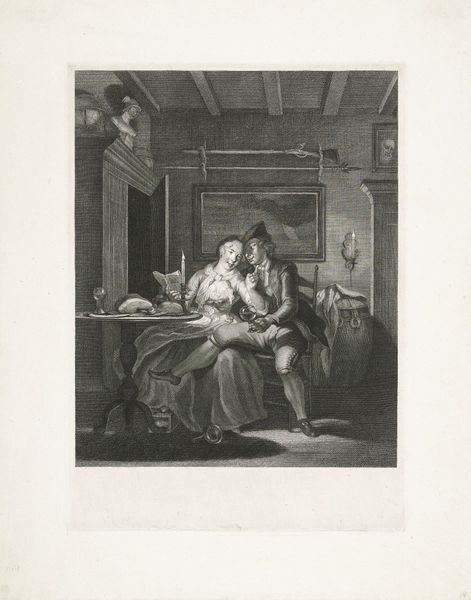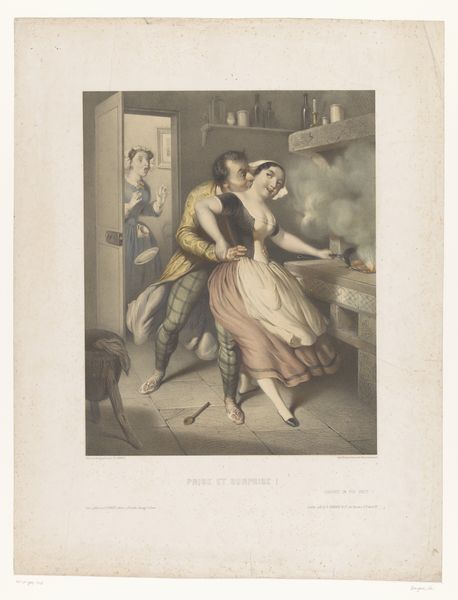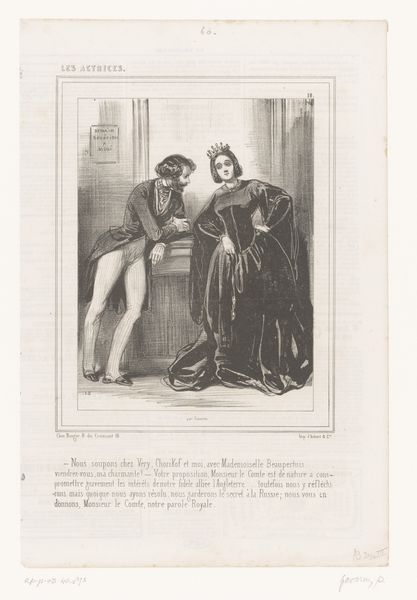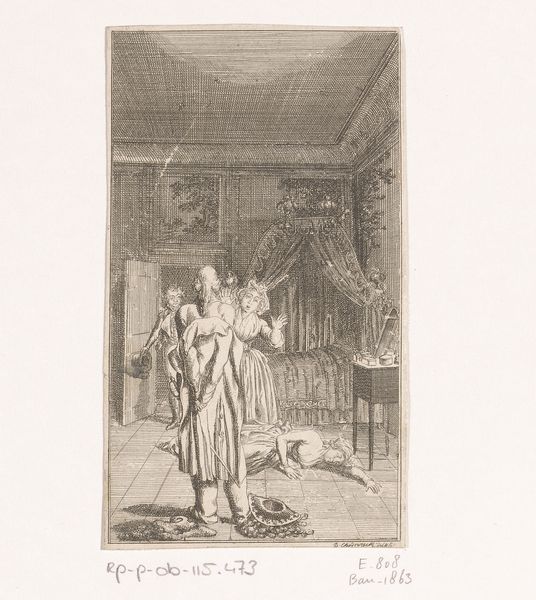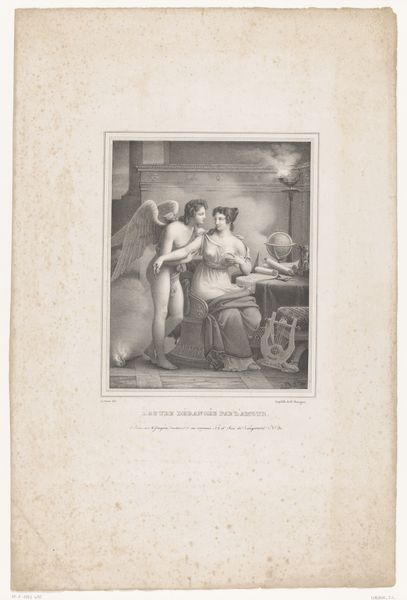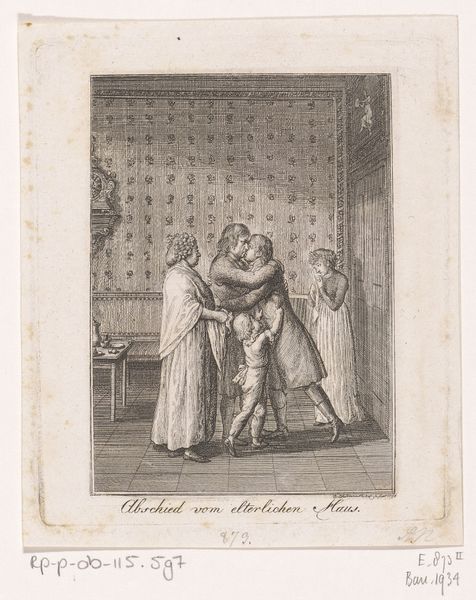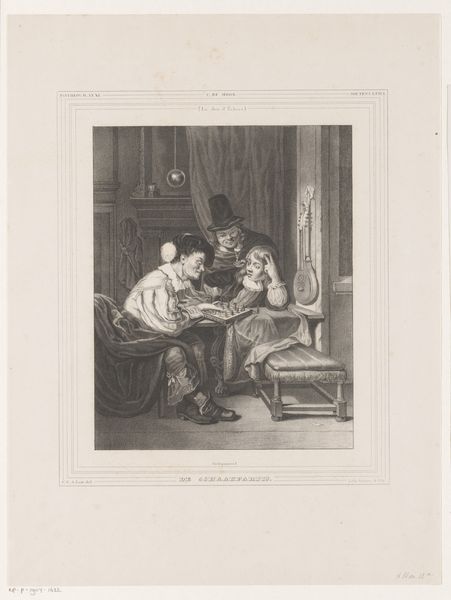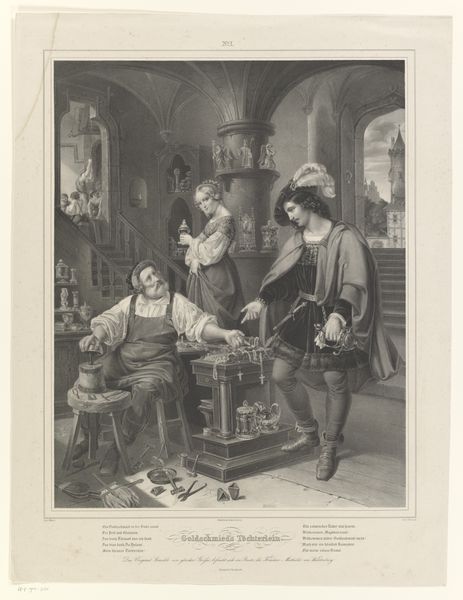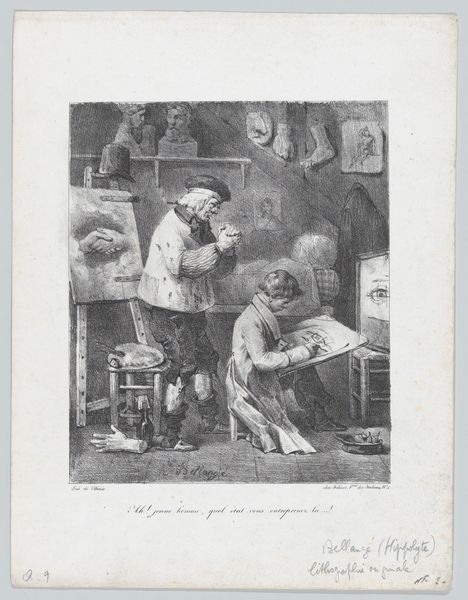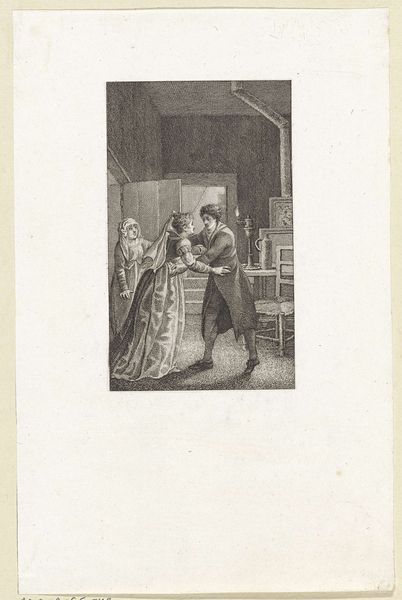
drawing, paper, engraving
#
drawing
#
narrative-art
#
figuration
#
paper
#
intimism
#
romanticism
#
19th century
#
line
#
genre-painting
#
engraving
Dimensions: height 251 mm, width 178 mm
Copyright: Rijks Museum: Open Domain
Curator: Before us hangs Paul Gavarni’s 1833 engraving, "Herder neemt herderin 's avonds mee naar zijn kamer," or, "Shepherd taking shepherdess to his room at night". It resides here at the Rijksmuseum. Editor: My immediate reaction? It's quite suggestive, and somewhat unsettling given the power dynamics hinted at. It feels rather… intimate. Curator: Absolutely. The etching captures an important intersection of class, gender and power during that era, while adhering to narrative-art thematics. Observe their costuming—his practicality compared to her affected garb, designed to entice. It reminds one of the performance of femininity during this period. Editor: Precisely. Look at the use of line to suggest texture – her layered skirts versus the rustic materials that form his outfit, and even the interior space. You get the sense of labor involved in their construction, the specific economic constraints within which these garments were made and worn. It's revealing. Curator: I agree. Their interactions represent a microcosm of broader societal expectations of that time. Think, too, about gendered agency – he, as initiator, versus her potential lack of consent. Editor: That tension really translates into how they're situated spatially. He literally opens the door, bringing her in, whereas she relies on the light that guides her and reveals her more ornamented clothes. One might call this “the shepherd’s hour”, but how should we read the work that hour extracts? Curator: Exactly. And isn’t it interesting to note that while “Amour” looms at the very top of the image, the very nature of love and relationships depicted is dubious. One gets a palpable sense of coercion under the thin veneer of chivalry, reflecting wider patriarchal social relations and values of that time. Editor: This speaks to the very fabric of Romanticism, often depicting idyllic pastoral scenes but never being shy of exposing uncomfortable, existing hierarchical structures. A beautiful demonstration of conflicting layers between appearance and reality. Curator: A complex commentary that remains relevant when we assess similar power dynamics that are replicated still today. Editor: Ultimately, it brings forth an uncomfortable yet crucial conversation on labor, material conditions and ethics embedded in our very perception of art.
Comments
No comments
Be the first to comment and join the conversation on the ultimate creative platform.


